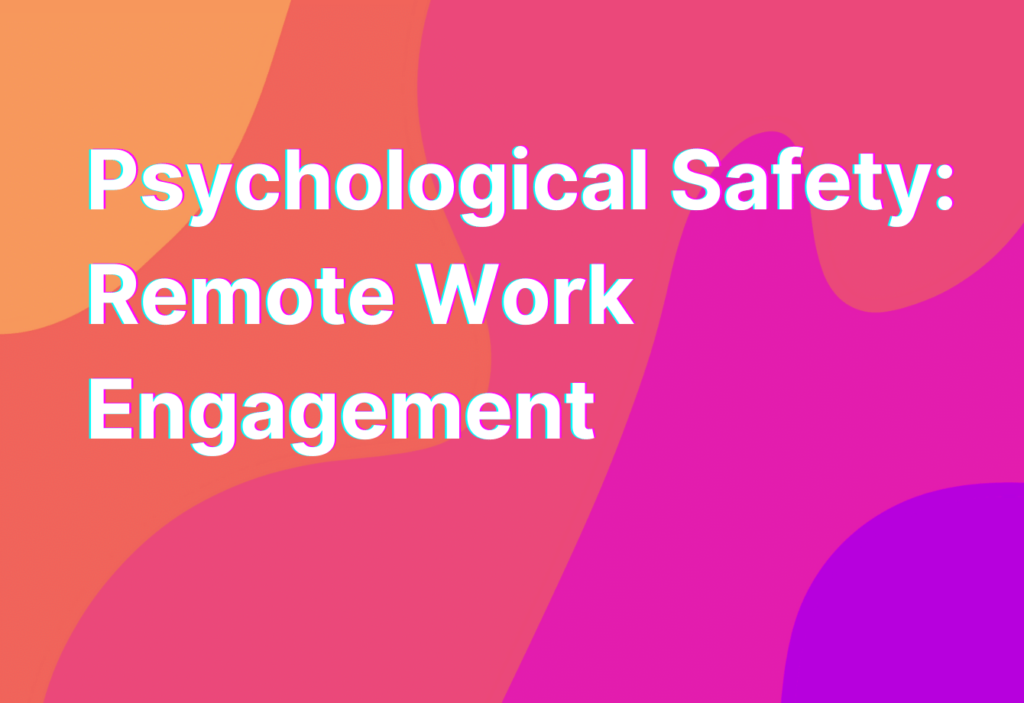Psychological Safety: Remote Work Engagement
Hey there, remote work enthusiasts! It’s Ashley here, your friendly remote work advocate with 10 years of experience in the tech industry. Today, I want to dive into a topic that is crucial for remote work success: psychological safety. So grab your favorite cup of coffee and let’s get started!
What is Psychological Safety?
Psychological safety is the belief that you won’t be punished or humiliated for speaking up with ideas, questions, concerns, or mistakes. It’s all about creating an environment where team members feel safe to take risks, be vulnerable, and express their true selves without fear of negative consequences.
Now, you might be wondering, “Why is psychological safety important for remote work engagement?” Well, my friend, let me tell you!
The Importance of Psychological Safety in Remote Work
- Enhanced Communication: When team members feel psychologically safe, they are more likely to communicate openly and honestly. This leads to better collaboration, problem-solving, and decision-making.
- Increased Engagement: Remote workers who feel safe to express their thoughts and ideas are more engaged in their work. They feel valued and respected, which boosts their motivation and productivity.
- Stronger Relationships: Psychological safety fosters trust and empathy among team members. It creates a sense of belonging and encourages meaningful connections, even in a virtual environment.
- Innovation and Creativity: When people feel safe to share their innovative ideas and take risks, it sparks creativity and drives innovation within the team. This can lead to groundbreaking solutions and new opportunities.
- Reduced Stress: Remote workers who feel psychologically safe experience less stress and anxiety. They can focus on their work without constantly worrying about negative consequences or judgment.
Now that we understand the importance of psychological safety, let’s explore some practical ways to foster it in a remote work setting.
How to Foster Psychological Safety in Remote Teams
- Lead by Example: As a leader or manager, it’s crucial to model the behavior you want to see in your team. Be open, transparent, and approachable. Encourage feedback and show appreciation for diverse perspectives.
- Establish Clear Communication Channels: Provide multiple channels for communication, such as video calls, instant messaging, and project management tools. This allows team members to choose the method that makes them feel most comfortable expressing themselves.
- Encourage Active Listening: Actively listen to your team members without interrupting or judging. Show empathy and validate their feelings and experiences. This creates a safe space for open dialogue.
- Set Realistic Expectations: Clearly communicate expectations, deadlines, and goals to avoid misunderstandings and unnecessary stress. Be flexible and understanding when unexpected challenges arise.
- Promote Psychological Safety in Meetings: Create a meeting culture where everyone’s voice is heard and respected. Encourage participation, ask for input, and address any disrespectful behavior promptly.
By implementing these strategies, you can create a psychologically safe remote work environment that fosters engagement, collaboration, and innovation. But remember, it’s an ongoing process that requires continuous effort and improvement.
Wrapping Up
Psychological safety is the foundation of remote work engagement. When team members feel safe to express themselves, they are more likely to communicate openly, engage in their work, and contribute to the team’s success. So, let’s prioritize psychological safety in our remote teams and reap the benefits it brings!
If you want to learn more about boosting employee engagement in remote work, check out our Remote Work Policy article. It’s packed with valuable insights and practical tips to create a thriving remote work culture.
Stay safe, stay engaged, and keep rocking that remote work life!


